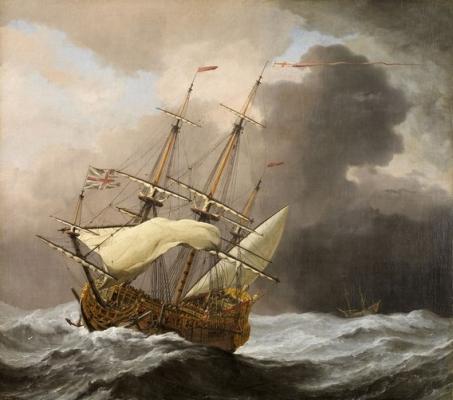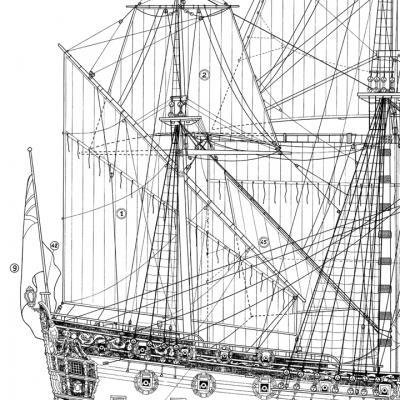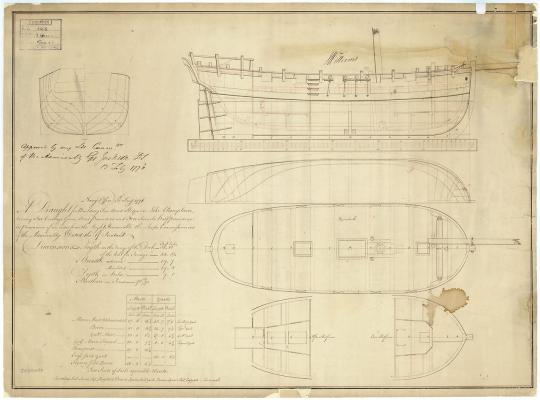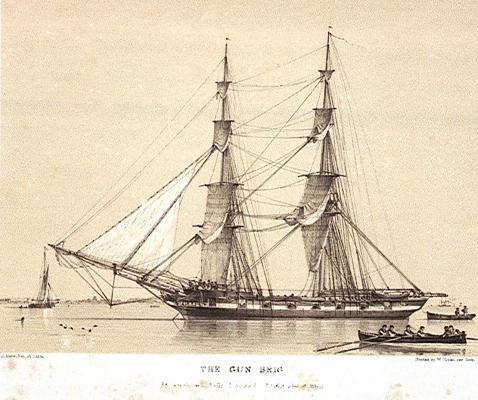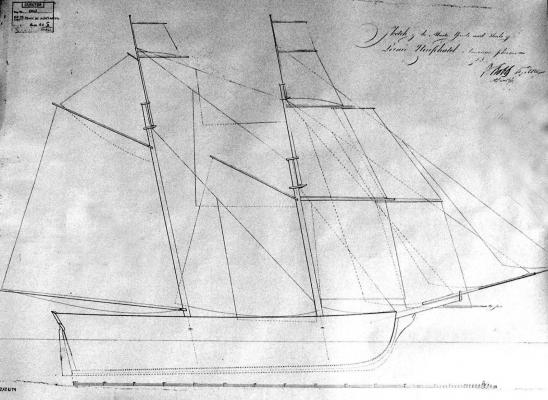-
Posts
841 -
Joined
-
Last visited
Content Type
Profiles
Forums
Gallery
Events
Everything posted by michaelpsutton2
-
Many years ago I got this copy of Pook's Inboard works in 1847 from either the National Archive or the Library of Congress. Maybe it will help. Be careful though, the original was obviously torn and distorted. The quaterdeck ports, and shroud arrangements are different than Ware's sail plan of 1817.
-
I have been following your build with much interest. My grandfather grew up on the beach at Bay St Louis in the '20s and was an avid sailer of schooners and cat boats. He spoke fondly of the commercial Biloxi bay schooners he saw all around him. Just a question of terms.........auto correct is objecting to my use of sailer with an "E" rather than the "O". But I think I am correct in this usage.
-
All research for the Constitution begins by reading the proper chapter in TG Martin's "Most Fortunate Ship". Then you begin the search for the original sources.
-
If you were working on a Royal Navy Vessel in the closing decades of the 17th century, what shape would you give the mizzen sail? Lee says triangular and cut square with the leech and the foot at 90˚ I have seen a number of illustration and modern plans that show the mizzen as a four sided trapezoid almost as though a rectangular bonnet had been added to the foot. It is not a question of appearance. Which is historically correct? I do not know of any English sail plans between Mathew Bakes galleons in the late 1500's and a rigging plan for the 1719 Establishment. Even St Anthony Deane in his Doctrine of Naval Architecture only show the spars not the sails.
-
I would weigh in on the side of the practical. Differences of an inch or two at this scale are not going to be readily discernible. There is always the internal satisfaction that comes from kn wrong that you have done it right. Or at least as close to right as you can. But there is no avoiding the fact that soon after finishing any project new information always comes to hand. And it almost always contradicts what you have done
-
I believe Steels 1794 has 13"
-

rigging tackle size
michaelpsutton2 replied to gluedandscrewed's topic in Masting, rigging and sails
There are several replica museum ships from the period sailing today. You might look at them and see what sizes of rope they use under real world conditions and then scale it down to your model. -
The paint didn't last. Frequently the main ingredient was pitch or pine tar. I have heard of lard being used. Generally it was colored powders in some kind of a suspension. There are plenty of contemporary accounts of how bad ships looked after a trip
-
Many people underestimate the part that economics and politics played. I suspect some of the preliminary models were as ornate as possible to raise interest in the project and the prestige of the shipwright. Once the ship was approved, funded, built and in service the navies would then maintain them using the cheapest, plainest paints that could be found on the planet. Many time purchasing from corrupt suppliers who supplied sub par product.
-
In addition to Druxey's absolutely correct observation you have the option of choosing 3 step, 4 step decks or more. I put a patio deck in at my step son's about a month ago and it became a rather warm conversation. We finally agreed to drink on it for a while and the next morning laid the neatest 4 step you could wish for. The real issue was ending up with rather short bits on some of the ends. Which leads me to the suggestion that you lay out the whole deck before doing anything even slightly permanent
- 4 replies
-
- deck planking
- butt shift
-
(and 1 more)
Tagged with:
-
It is my understanding the the Vasa of 1627-8 was intended as a flagship and a prestige vessel. I think you would be safe to assume that both the carvings and the painting were more elaborate than most ships. She was designed from the start to impress.
-
Spendid build No two ways about it. Here's the original plan from the NMM website. There seems to be plenty enough information to attempt a model.
- 83 replies
-
- sloop of war
- sloop
-
(and 1 more)
Tagged with:
-

Batavia by *Hans* - FINISHED
michaelpsutton2 replied to *Hans*'s topic in - Build logs for subjects built 1501 - 1750
A great model and your build log has provided the chance to see some great conversation on Dutch practice which I know so little about. -

What is a topgallant forecastle?
michaelpsutton2 replied to usedtosail's topic in Nautical/Naval History
A topgallant forcastle is a small deck in the bow of a ship. Obviously all forcastles are a small deck in the bow of a ship. It is the uppermost deck. What makes it a top-gallant forecastle is when it is above the height of the main rail. Usually top-gallant forecastles were added to smaller vessels that did not have any foc'sle at all. On these smaller ships (brigs & sloops etc) the bulwarks were not tall enough to provide the minimum acceptable head room under a deck. Therefore an addition was added to the height of the sides. If you examine the print of the HMS Nautilus you will see the addition to the sides from the stem to about the last lower shroud. She began life as a typical Cherokee class 10 gun brig. This vary large class of brigs were generally flush decked. This ship had a top-gallant foc'sle added later in life. It may have been to provide an additional covered space. Maybe a platform was needed to get the sailors handling the head sails away from the crew handling the anchor cables. -

Fitting of top mast in a raking mast.
michaelpsutton2 replied to roach101761's topic in Masting, rigging and sails
-

Fitting of top mast in a raking mast.
michaelpsutton2 replied to roach101761's topic in Masting, rigging and sails
It is my general impression that on fore & aft rigged masts, particulary on smalles vessels, the trees and the cap were set perpendicular to the mast. On larger vessels especially on square rigged masts where men worked in the tops, the trees were parallel to the deck or waterline. The original sail plan of the Fair Rosemond/Dos Amigos has all the trees & tops perpendicular to the masts. The 1851 sailplan of the USS Macedonian as a razee plainly has her tops & trees parallel to the waterline. -

Copper plated ships in NMM
michaelpsutton2 replied to Gaetan Bordeleau's topic in Nautical/Naval History
Certainly one of the best paint jobs I have seen. It sets off the run of the plates without being too heavy handed. I am going to try something similar on a drawing. And i truly understand about how you have to find a few minutes here & there. -
Absolutely superb. I am planning a half hull model of the brig Port Antonio shortly so I have followed your build with great interest. If you were intending all along to paint the upper hull black, why the two kinds of wood? I do think that the black hull and that simple but so elegant gold stripe set the shape off just right
-

Copper plated ships in NMM
michaelpsutton2 replied to Gaetan Bordeleau's topic in Nautical/Naval History
Evan, might iI ask how you achieved the checkerboard effect. Did you hand paint individual plates with different paints? -
When the time comes please post plenty of pic's on how to lay out the hull graphics!
- 220 replies
-
- finished
- volvo open 70
-
(and 1 more)
Tagged with:
About us
Modelshipworld - Advancing Ship Modeling through Research
SSL Secured
Your security is important for us so this Website is SSL-Secured
NRG Mailing Address
Nautical Research Guild
237 South Lincoln Street
Westmont IL, 60559-1917
Model Ship World ® and the MSW logo are Registered Trademarks, and belong to the Nautical Research Guild (United States Patent and Trademark Office: No. 6,929,264 & No. 6,929,274, registered Dec. 20, 2022)
Helpful Links
About the NRG
If you enjoy building ship models that are historically accurate as well as beautiful, then The Nautical Research Guild (NRG) is just right for you.
The Guild is a non-profit educational organization whose mission is to “Advance Ship Modeling Through Research”. We provide support to our members in their efforts to raise the quality of their model ships.
The Nautical Research Guild has published our world-renowned quarterly magazine, The Nautical Research Journal, since 1955. The pages of the Journal are full of articles by accomplished ship modelers who show you how they create those exquisite details on their models, and by maritime historians who show you the correct details to build. The Journal is available in both print and digital editions. Go to the NRG web site (www.thenrg.org) to download a complimentary digital copy of the Journal. The NRG also publishes plan sets, books and compilations of back issues of the Journal and the former Ships in Scale and Model Ship Builder magazines.




